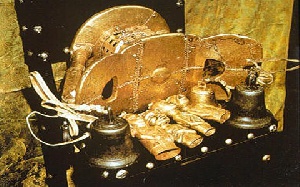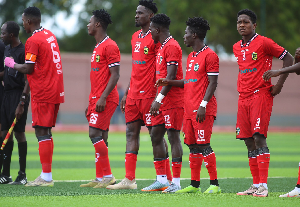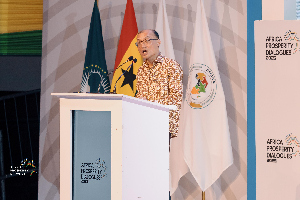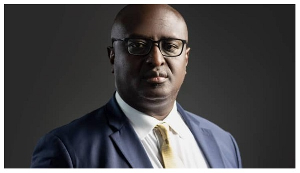“The contribution of our forebears to culture and education should inspire us to make our own impact on the world scene and strengthen our self-confidence.
Often we do not know what Africans have done and our ignorance impacts on our confidence”- K.B Asante.
Anytime you get an opportunity to visit a palace in an Akan community, take a good look at the chairs there. You are likely to see an “asesegua” among them. But do you know “Asesegua?” If you don’t, don’t worry. Asesegua is a traditional Ghanaian stool curved from wood or log.
Asesegua has been used in the past by mainly chiefs, queens, priests, priestesses, twins and members from royal homes, particularly in the Akan speaking communities.
The stool, asesegua, by its nature symbolises royalty; a sign of kingship in Akan traditions and customs. In the past, it was the only chair that a king or queen sat on in his palace.
The stool has both religious and traditional relevance even in our time. In traditional marriage ceremonies, for example, the asesegua used to be part of the bride price.
Experience
I grew up in a society where the asesegua was viewed as an important stool for highly respected people in the society. As children; we were not allowed to sit on it, especially those in palaces.
During special occasions such as Ahobaa and Akwambo festivals, for instance, I used to see some elderly persons, mostly women, carrying the assesegua to the ceremonial ground. Those stools were meant for the comfort of the chiefs and queens at the durbar ground.
Some asesegua are kept indoors and are only brought out during ‘special occasions’ after some rituals have been performed.
Since the inception of the Fourth Republic, the seat reserved for the use of our Presidents in the Parliament House has been designed in an asesegua mode.
However, in spite of all the many cultural, economic, religious and political relevance of this indigenous Ghanaian stool, its prominence appears to be progressively losing its rightful place in many Akan palaces. Foreign chairs are gradually taking over.
The asesegua comes in different forms, sizes, shapes, designs and meanings. Some are designed with the symbols of the kings or the kingdoms that they represent. All these designs are carefully selected to reflect the power behind the stool and as a tool of communication.
Carver/names
I caught up with Mr Victor Nuhu, known popularly as Methuselah, at his base at Ajumako Mando in the Central Region. He is a skillful wood carver and an asesegua specialist.
Methuselah explained that “because asesegua has historical antecedent, we only modify the old designs with some new additions in order to make them more appealing”.
He said some of the popular design names included: “Eda ayayaa a” “nnhu nyame”, “Gye Nyame”, “Misa kumkumfi”, “Kory?”, “Trinity”, “Sankofa”, and “Cka ?nwaa nye Akyekyir a, nkyé itur nkakasa wc? kwaa mu”.
He said although the demand for the stools had gone down, some chiefs and queens still patronised them, adding that “chiefs use the stools very well because it is part of our culture”.
Methuselah, who has more than 15 years’ experience in wood carving, explained that the stools were mostly made with the totemic symbols of clans or families they were made for.
He said, for instance, that in the palace setting,chiefs normally used the bigger asesegua.
Trees
He said asesegua were made from tree species such as ?sese and bodaa, explaining that some of the asesegua that were used for spiritual and traditional activities were made from trees including odum, ?danta, wawa, opupuro and oyaa.
According to Methuselah, the above mentioned trees were of high spiritual value, thus their use has a spiritual signicance and purpose.
But these trees, Methuselah mentioned, are not easily obtained. You have to struggle to get them.
“If someone asks me to make an asesegua, I go to the forest to search for the appropriate tree depending on what they are going to use it for”, he said, adding that “After identifying the tree, I go to negotiate with the owner of the land and if he agrees to sell it, we negotiate the price too”.
I was surprised when Methuselah revealed that after buying the tree from the land owner, he had to perform some rituals before cutting the tree.
“When I find an ‘odum’ or any of the spiritual trees, having paid the owner, I pour libation and also place some coins under it before I cut it. This is because there may be spirits dwelling in the tree so when I pour libation, it informs them about what I am about to do to the tree. The coin also signifies that I have bought the tree spiritually from the spirits”, he said.
Pricing
Touching on the pricing, Methuselah said asesegua, which are meant for spiritual things, were more expensive than the normal ones.
“The spiritual ones are more expensive than the normal ones because of the type of trees we use to make them”, he said.
“We use straight trees to make the stools. It is very expensive to buy the trees from the owners, especially when they know you are going to use it to make stools”, he said.
Methuselah, whose skills in asesegua carving is self-taught said they usually bought the trees at GHC500 depending on its size, with the lowest price being GHC200.
He explained that ‘?sese’ and ‘odum’ trees were very expensive, noting that such trees were good for making stools and other carving artifacts.
He said asesegua for chiefs were sold for between GHC250 and GHC 500 adding that the ordinary ones such as those for marriage ceremonies ranged between GHC400 and GHC150.
Crafting
Methuselah explained that he used four days to make an asesegua from a dried log, adding that “if the log is fresh, it will take about two weeks to make it because if you don’t dry the wood well, it would develop cracks after a month”.
He said although wood carving was difficult and required creativity, people who were smart could use six months or a year to learn the profession.
Methuselah said because the demand for the stool had gone down, most of the players only made them on demand.
Observation
Wasn’t there any reason our ancestors thought of a unique design to represent our culture and royalty? I am worried that our unborn generation might not come to meet this well revered indigenous Ghanaian royal stool in future.
Regional News of Monday, 30 May 2016
Source: Zadok Kwame Gyesi

















